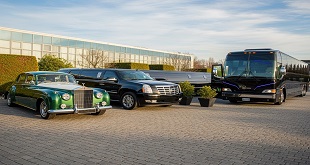Nowadays, there are few people under the illusion that construction is the safest job in the world. However, the danger involved shouldn’t just be taken as a given. It needs to be actively resisted at every point. So in this article, we’re going to look at some of the most dangerous aspects of a construction job and what you can do to combat them as an employer.
Know the environment
A lot of problems begin right from the start. Particularly when it comes to terrain that proves unsafe to work on in the end. Before any business begins at a location, make sure that it’s fully inspected. Building on unstable land means that a project can settle too quickly. This leaves an unsafe working environment and a structurally unsound end product if you get that far. A proper ground survey is important.
Dealing with heights
Many construction projects will, at some point, involve heights. Many of these can be safely tackled with scaffolding and platform equipment. For some jobs, however, climbing is involved. For those jobs, you need to make sure not only the right climbing equipment is provided. Anyone who is going up those kinds of heights needs to have access to fall arrest equipment. Particularly in dealing with uneven ground, you never know when a fall from a great height might happen. Make sure you have backup ready in those circumstances.
The importance of PPE
Personal protection equipment is a vital part of any project, anyone knows that. Yet there are still a lot of construction businesses who don’t take the proper precautions with them. Then they wonder why accidents can get so bad. Providing and maintaining the equipment isn’t all that’s required. The proper training for employees matters, too. Not just how to use and wear PPE equipment, but when it’s necessary. Invest in signage to help your workers identify risks and the preventive measures they need to be taking.
Don’t take chances with machinery
Vehicles and machinery are a common sight on construction sites. They are also a common cause of accidents. Safer vehicle use begins with the equipment itself. Schedule maintenance checks and risk assessments with vehicles each time they’re needed on a new project. From then, it’s about training and ensuring staff are equipped to use them safely. For instance, teaching them that backing up should be avoided and signaled as much as possible.
Scaffolds
We’ve mentioned scaffolds already. As well as the dangers that come with working with any kinds of height, scaffolds provide unique danger. They can pose a huge risk to the people below as well as on them. Especially in areas where passers-by can still move freely. Don’t let anyone unqualified handle scaffolding. Then make sure that walkways on the scaffolding are kept perfectly clear at all times.
You can never get rid of danger in construction. You can, however, do all that’s in your power to mitigate the risk to your employees. Train them. Spot risks. Make sure you’re using the right equipment that’s properly maintained.
 Entrepreneur Resources Your source for small business information
Entrepreneur Resources Your source for small business information








Hello Dequiana, I completely agree with you. Yes, safety is the prime importance for each and every construction. High quality and trusted products should prefer for the best security. Because, lack in security shows reckless and result may be very dangerous. Thanks!
Construction need safety first because of worker.
These are very important points. Too often people from head offices will just purchase whatever safety equipment is on special at that moment without consulting the employees who will actually be using the equipment.
It is not enough to just buy the cheapest thing as long as it is compliant with the job performed. If the safety equipment is not comfortable to wear, the employee will either choose not wear it and be at risk or they will feel uncomfortable and be less productive. Being uncomfortable all day every day makes people unhappy. It is a recipe for disaster.
Safety equipment should be chosen with the user in mind, after consultation.